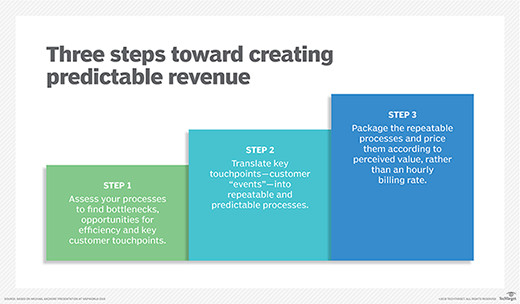Managed It Services represent a strategic approach for businesses seeking to optimize their technology operations without the complexities of direct management. In essence, a managed IT service involves outsourcing specific information technology tasks to a third-party expert, known as a Managed Service Provider (MSP). This arrangement shifts the responsibility for maintaining and ensuring the functionality of IT services and equipment from the client to the MSP. Typically, clients operate under a subscription model, paying a recurring fee, often monthly, in exchange for consistent, reliable service delivery. The core principle behind managed IT services is to alleviate the burden of IT upkeep from the client, allowing them to concentrate on their primary business objectives. A well-structured managed services partnership yields predictable IT costs and empowers businesses to dedicate their resources to strategic growth rather than routine IT management.
Core Services Offered Under Managed IT
The spectrum of managed IT services is broad, catering to diverse business needs. However, some services are more commonly utilized due to their fundamental importance in maintaining robust IT infrastructure and operations.
Remote Monitoring and Management (RMM)
At the foundation of many MSP offerings is Remote Monitoring and Management (RMM). This service involves the continuous oversight of a client’s IT infrastructure – servers, desktops, mobile devices, and network components – from a remote location. RMM enables proactive issue detection, preventative maintenance, and rapid troubleshooting, often resolving problems before they impact business operations. While RMM is a prevalent and foundational service, its widespread availability has led to increased competition among MSPs, emphasizing the need for providers to offer differentiated value.
Managed Security Services: Fortifying Digital Defenses
As cyber threats become increasingly sophisticated and prevalent, managed security services have emerged as a critical offering. Businesses are recognizing the necessity of expert cybersecurity support and are turning to MSPs to bolster their defenses. Managed security services encompass a range of offerings, including threat detection and response, vulnerability management, security information and event management (SIEM), and compliance management. MSPs are either developing specialized security practices in-house or partnering with dedicated cybersecurity vendors to deliver comprehensive protection against evolving digital risks.
Cloud Managed Services: Navigating the Cloud Landscape
The proliferation of cloud computing has significantly reshaped the IT landscape, and managed IT services have naturally evolved to incorporate cloud-based solutions. MSPs play a vital role in helping businesses leverage the cloud effectively. This includes managed Infrastructure as a Service (IaaS), where MSPs manage public cloud infrastructure on platforms like Amazon Web Services (AWS), Google Cloud, and Microsoft Azure. Furthermore, MSPs offer managed Platform as a Service (PaaS) and collaborate with Software as a Service (SaaS) providers like Salesforce and ServiceNow, extending their management expertise across the entire cloud stack.
Managed Communication Services: Streamlining Business Communications
Effective communication systems are the backbone of modern businesses. Managed communication services, such as managed IP telephony, are designed to ensure seamless and reliable communication infrastructure. In this model, the MSP assumes responsibility for a client’s voice services, including setup, maintenance, and support, ensuring optimal communication flow within the organization.
 MSP pricing graphic
MSP pricing graphic
Managed IT Service Agreements: Defining the Partnership
The framework for a managed IT service engagement is typically established through a master services agreement (MSA). This document outlines the overarching terms and conditions governing the relationship between the MSP and the client. Crucially, a Service Level Agreement (SLA) is a cornerstone of any managed IT service contract. The SLA meticulously details the specific services the MSP will provide, defines performance metrics, and establishes how the success of service delivery will be measured and reported. The SLA is often integrated as a component of the broader MSA, ensuring clarity and mutual understanding of service expectations.
MSP Pricing Models: Understanding the Cost Structure
MSPs employ various pricing models for their managed IT services, offering flexibility to suit different client needs and preferences. Common pricing structures include per-device, per-user, and all-inclusive models.
For services like RMM, a per-device pricing model is often applied, where a fixed fee is charged for each device under management. The per-user model becomes advantageous when clients have users who utilize multiple devices, such as laptops, tablets, and smartphones, providing a more consolidated and predictable cost per user. The all-inclusive pricing model, also known as a flat-fee model, encompasses a comprehensive suite of managed IT services for a single, predictable fee, simplifying budgeting and providing comprehensive coverage.
Managed IT service billing is typically conducted on a recurring schedule, with monthly billing being the most prevalent. This consistent, flat-fee approach offers clients predictable IT expenditure and provides MSPs with the stability of Monthly Recurring Revenue (MRR), fostering long-term, sustainable partnerships. The shift to a managed services pricing model represents a significant change for IT providers traditionally reliant on hourly billing, requiring a transition towards standardized, repeatable processes and value-driven service delivery.
The Genesis of Managed IT Services: A Historical Perspective
The concept of managed IT services emerged in the 1990s, largely driven by the rise of Application Service Providers (ASPs). ASPs pioneered the delivery of applications over the internet, effectively hosting software remotely for clients. This ASP model laid the groundwork for the modern MSP industry by demonstrating the viability and efficiency of remote IT support and infrastructure management, paving the way for the comprehensive managed IT services we see today.